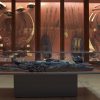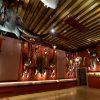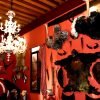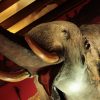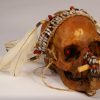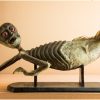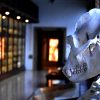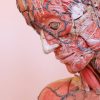Or the evolution of naturalist collecting. Rare, curious and precious objects, not only from travels and expeditions to distant lands, but also from everyday life. Natural History collections between aesthetic displays and a carefully ordered scientific tool.
EXPLORERS FROM VENICE. Tales of travels, studies and expeditions
Giovanni Miani. Autodidact, musicologist, poet, patriot and exile, Giovanni Miani adopted Venice as his native city and sought fame in his African explorations. In 1859 he organized an expedition in search of the sources of the Nile which, in 1860, after various vicissitudes, took him further up the river than any other European had ever been. Despite his perseverance and courage, he did not fulfil his aim: the sources were discovered later by the Englishmen Speke and Grant in 1862 and Miani died in Africa 10 years later. The exhibits on display come from the 1,800 finds he collected during his first expedition, almost all of which he then donated to the city.
Giuseppe de Reali. A passionate “big game” hunter, Count Giuseppe de Reali (1877-1937) put together an impressive collection of hunting trophies and other colonial style items during his various safaris to northern and equatorial Africa. Mainly made up of large animals but also ethnographic material and evocative photographs, when he died his collection was donated by his heirs to the City of Venice. Although it had no scientific objectives, together with the materials brought to Europe by other travellers and explorers of the same period, de Reali’s collection contributed to the knowledge of ethnographic and naturalist knowledge of the African continent.
Giancarlo Ligabue. A successful Venetian entrepreneur, for over 30 years Giancarlo Ligabue devoted himself with great passion to both exploration and scientific research, organizing many expeditions to five continents, often yelding the most amazing results. He is also the founder of the Study and Research Centre that bears his name. The ties between Ligabue’s discoveries, research and collections and the Natural History Museum of Venice are very close, also thanks to his considerable donations, first and foremost the Ouranosaurus nigeriensis on display in the first room of the Museum.
MUSEUM AND SCIENCE. From the “cabinet of curiosities” to scientific museum.
Wunderkammer: the room of wonders. The Renaissance saw the flourishing of the arts, sciences and culture while the study of new commercial horizons encouraged explorations beyond known borders. European scholars in the XVI century therefore came to possess an incredible variety of objects, plants and animals, some of which had already been the subject of legends in Mediaeval bestiaries and travellers’ tales in times long past. This is how the first collections that adorned scholars’ private cabinets originated, transforming them into real rooms of wonders, more alchemistical than scientific in nature. In the first half of the 1700s these wunderkammer began to be opened to the public, thus paving the way for the future scientific museums.
Museum and Science. As a result of the experimental scientific method introduced during the 17th century, trust in reason and the primacy of science were established during the enlightened eighteenth century. The tendency to amaze with a wealth of shapes and sizes and the abundance of finds was replaced by the need to study the extraordinary variety of organisms and natural products adopting a common and ordered method of classification. As did their counterparts in other countries, naturalists in Venetia undertook systematic studies throughout their territory and created outstanding collections. Together with publications, manuscripts and scientific correspondence, many of these represent the initial nucleus of the considerable patrimony of the Natural History Museum of Venice Giancarlo Ligabue.

